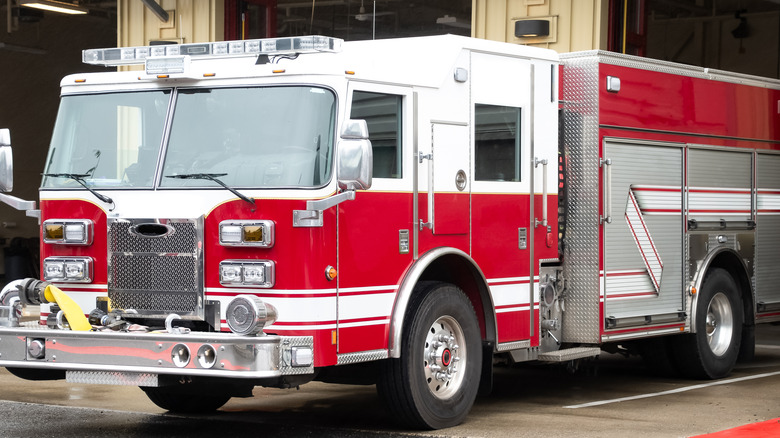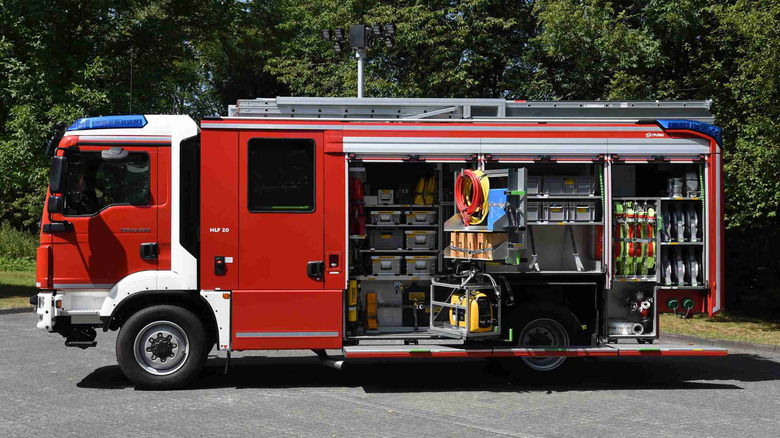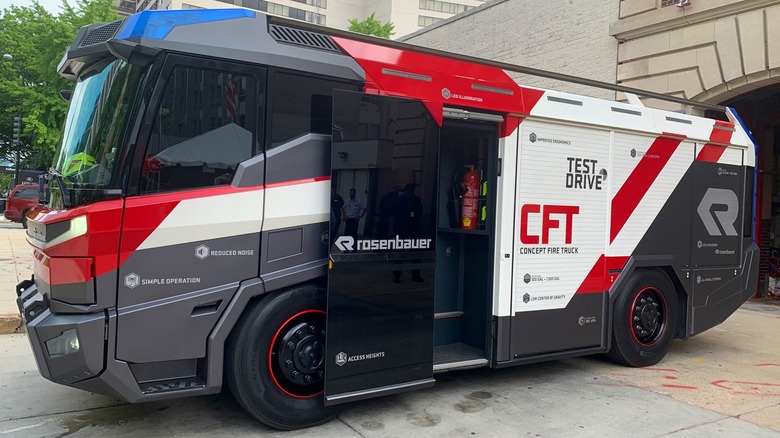Why Are American Fire Trucks Bigger Than Their European Counterparts?
American fire trucks often stretch up to 50 feet long and nearly 9 feet wide, and that's not just for show. The U.S. is known for its wide-open roads, extra-long blocks, and suburban sprawl that goes on forever. That kind of infrastructure makes it easier to roll out fire engines the size of buses, and local fire departments take full advantage of the room. Moreover, most fire departments in the U.S. don't just fight fires. Many calls are for medical emergencies and incidents like vehicle crashes or even false alarms. So instead of sending different vehicles to different emergencies, they load up one big machine with water, ladders, medical gear, and space for up to eight firefighters. That said, some situations do call for dedicated water trucks.
Naturally, cramming all that into one rig takes space. That's why U.S. trucks are built with big, custom-made cabs, while their European cousins usually stick with smaller, commercial chassis. On top of that, American rigs often come with oversized pumpers and heavy-duty transmissions, well beyond what's needed just to pump water. The extra power adds even more bulk, and that's before you count the 750 to 1,000 gallons of water many carry just to be ready for anything.
How firefighting philosophies shape truck design
The design of a fire truck says a lot about how a country fights fires. In North America, the approach is all about getting there fast and hitting the ground running. That's why American rigs come with pre-connected hoses, onboard water tanks, and gear ready to go the moment the crew jumps off. Meanwhile, European departments take a more flexible approach. Trucks arrive packed like toolboxes, with everything neatly coiled, folded, or boxed away. Once they size up the scene, firefighters pull out just what they need. Hoses are rolled, pumps aren't pre-connected, and setups are adjusted on the fly. It's a slower start, but it lets crews tailor their response to the situation.
Moreover, this contrast is shaped by more than tactics. It's also baked into the rules. U.S. manufacturers follow a unified national standard called NFPA 1901, which lays out detailed requirements for everything from ladder length to equipment loads (there's even a reason fire trucks honk three times). That makes it easier to build big, multipurpose rigs. Europe doesn't have that kind of one-size-fits-all rulebook, and each country sets its own specs.
Size can hurt sometimes
Big trucks might be great for the suburbs, but in dense cities, they're causing problems. The huge sizes are making them a nightmare to maneuver through tight streets or around parked cars. Worse, Association for the Advancement of Automotive Medicine says that between 2000 and 2009, there were around 31,600 crashes involving fire vehicles and 49 of those resulted in the death of at least one fire truck occupant. This happens despite fire trucks' bright red color, designed for easy visibility. Research has shown that narrower lanes are actually safer for everyone, from drivers to cyclists to pedestrians.
What's more, fire trucks aren't even fighting that many fires these days. In the U.S., only about 4% of calls involve actual flames, per FEMA. A whopping 64% are for medical emergencies, like heart attacks or falls in the bathroom. But instead of sending a small EMS van or a paramedic on a bike, U.S. fire departments still roll out a 40-ton behemoth with a siren.
It's no surprise that people are starting to question whether it has to be this way. Cities like San Francisco have already started buying shorter trucks that can handle tight turns and narrow lanes just as effectively as the big rigs, but without the urban footprint. Washington D.C. even tested a compact electric fire truck with four-wheel steering and better visibility from the cab in 2021.


